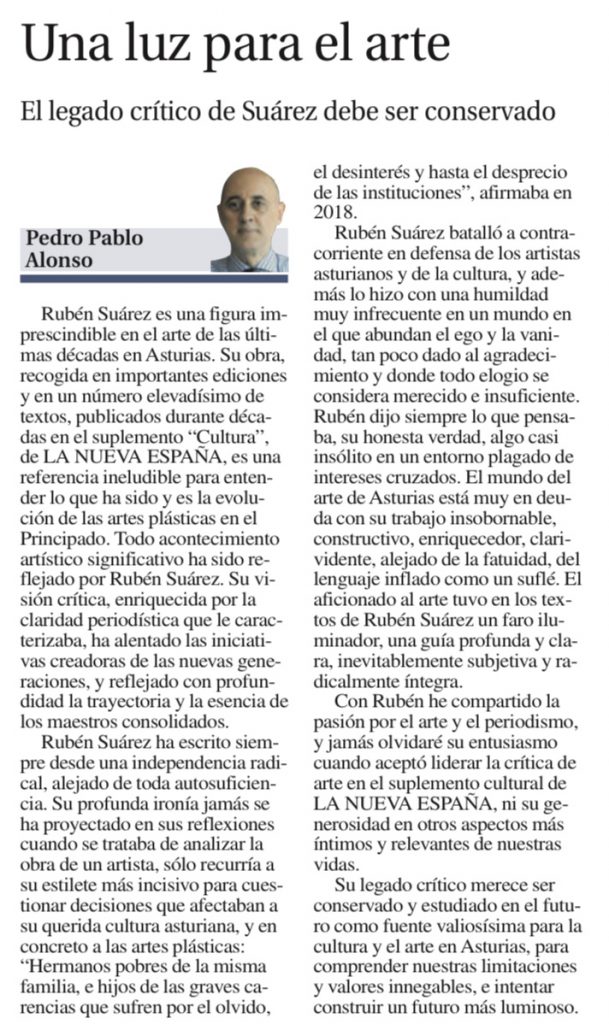Rubén Suárez is an essential figure in the art of recent decades in Asturias. His work, collected in important editions and in a very high number of texts, published for decades in the “Cultura” supplement of La Nueva España, is an inescapable reference to understand what has been and is the evolution of the plastic arts in the Principality. Every significant artistic event has been reflected by Rubén Suárez. His critical vision, enriched by the journalistic clarity that characterized him, has encouraged the creative initiatives of the new generations, and reflected in depth the trajectory and essence of the consolidated masters. Rubén Suárez has always written from a radical independence, far from any self-sufficiency. His deep irony has never been projected in his reflections when it came to analyzing the work of an artist, he only resorted to his most incisive stiletto to question decisions that affected his beloved Asturian culture, and specifically the plastic arts: “Poor brothers from the same family, and children of the serious deficiencies that they suffer due to forgetfulness, disinterest and even contempt of the institutions”, he stated in 2018.
Rubén Suárez fought against the current in defense of Asturian artists and culture, and also did so with a very unusual humility in a world where ego and vanity abound, so little given to gratitude and where all praise is considered deserved. and insufficient. Rubén always said what he thought, his honest truth, something almost unusual in an environment full of conflicting interests. The art world of Asturias is very much indebted to his incorruptible, constructive, enriching, clairvoyant work, far from fatuity, from language inflated like a soufflé. The art aficionado found in Rubén Suárez’s texts an illuminating beacon, a deep and clear guide, inevitably subjective and radically integral.
I have shared a passion for art and journalism with Rubén, and I will never forget his enthusiasm when he accepted to lead art criticism in the cultural supplement of La Nueva España, nor his generosity in other more intimate and relevant aspects of our lives.
His critical legacy deserves to be preserved and studied in the future as an invaluable source for culture and art in Asturias, to understand our limitations and undeniable values, and to try to build a brighter future.


